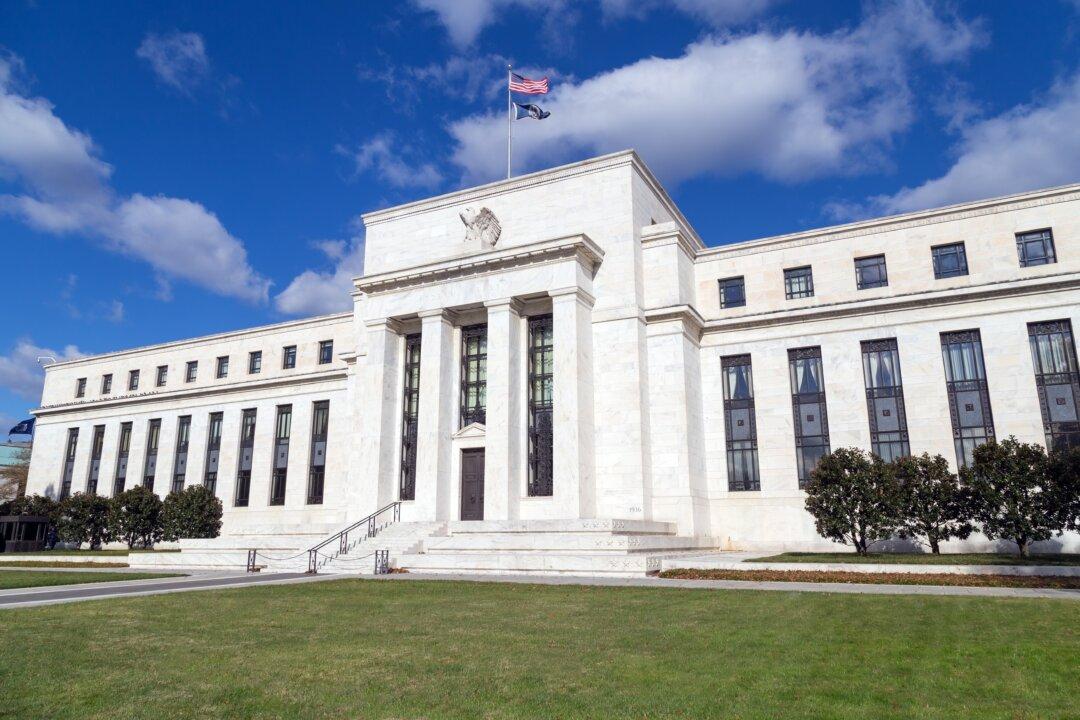Reading the paper for me was a trip back in time to when Keynesian economics ruled the realm. I was an undergraduate, and the textbooks were simply awful. But there’s a generation of economists who still preach this gibberish. It helps that bad theory gives the Fed a pass while blaming labor and supply factors.
Indeed, the paper in question barely mentions monetary policy at all.
Anyone who has taken undergraduate economics since about 1950 knows exactly what this is: the dreaded Phillips curve that posits some kind of inverse and everlasting relationship between unemployment and inflation. One goes up, the other goes down. If you want one high, you have to make the other low. It’s a sadistic theory: It means that the only way to tamp down inflation is to reduce vitality in labor markets and drive up unemployment.
Their diagnosis of the inflation problem is that labor markets became too “tight.” You might have noticed that economists specialize in substituting metaphors for actual science, which they then fob off as populist-seeming attempts to communicate with the public. By “tight” they really mean that the unemployment rate is low.
As we’ve discussed many times, the traditional unemployment rate as cranked out by the Department of Labor has far less meaning now than it once did. It tells you nothing about wages. It tells you nothing about labor participation or population/worker ratios. It doesn’t tell you about the number of people who hold two or three jobs. All it tells you is the percentage of workers who are looking for jobs who can or can’t find them at any price. That happens to be very low right now but reveals nothing about economic health.
For political reasons, we still keep hearing about it, and it’s the basis for why the Biden administration keeps crowing about their great economic record, even as most Americans are much poorer now than they were three years ago and saddled with expensive debt. From Bernanke’s perspective, the labor markets are still tight and hence are causing a “wage pull” inflation. In this, wages rise and cause a greater demand for goods and services, and then businesses raise prices to cover the costs. This then becomes self-reinforcing.
All of this works if you accept the old-fashioned Keynesian model, which is called ISLM. This was first hammered out in 1937 as an attempt to make sense of the ramblings of John Maynard Keynes. In the model, the IS stands for “investment-saving” and LM stands for “liquidity preference-money supply.”
The Phillips curve is an outgrowth of that more foundational outlook of big aggregates crashing into each other and thus granting macroeconomic managers permission to muck around with things they don’t understand and can’t really control.
To be sure, this outlook was hammered to pieces even from the time it was first posited, but it keeps not going away. The reason should be obvious: It gives government a great deal to do in terms of macroeconomic management. And it also allows Fed officials a whole range of factors they can point to in order to avoid taking the blame for inflation.
Even in this paper, the authors blast away at tight labor markets, oil supply shocks, broken supply chains, and so on while only mentioning “the easing of monetary policy” one time! Forget Milton Friedman’s rule that inflation is always and everywhere a monetary phenomenon. To these authors, it never is.
One might expect the relationship between monetary policy and prices to catch their notice in a more direct way. One drives the other, usually with a 12- to 18-month lag. But you won’t see any mention of this in their paper.
![(Data: Federal Reserve Economic Data [FRED], St. Louis Fed; Chart: Jeffrey A. Tucker)](/_next/image?url=https%3A%2F%2Fimg.theepochtimes.com%2Fassets%2Fuploads%2F2023%2F05%2F25%2Fid5291253-1-JAT-2023.05.25-1200x939.png&w=1200&q=75)
Fascinating, don’t you think?
At this point, one might expect that my inquisitor would ask about my own role in setting fire to the curtains, but if I handle this in just the right way, I might be able to avoid blame altogether. That’s the core goal of our authors here: to deflect attention from their own responsibility.
Instead, they take recourse to this Phillips curve thing, which has already been debunked for decades now. The very existence of stagflation (high inflation plus unemployment) already debunked it, but the model keeps hanging around. Why? The problem is surely psychological. If you’ve been doing something for decades that doesn’t really work, you still have an investment in what you’ve been doing. You'll likely defend it to your death.
There’s another factor at work here. These times have revealed the post-2008 Bernanke scheme of zero interest rates to have been a disaster for industrial structures. The rising labor problems in tech and media trace to this policy. Zero interest rates drove capital out of short-term projects and into long-term speculative investments that have proven unsustainable. It nudged corporate America to throw labor and salaries at problems that would have been more easily solved through more rapid technological adoption.
Fed head Jerome Powell was trying to unravel this disaster in 2019 when he was called upon to buy up the debt created by Congress to fund the lockdowns. All other factors, from supply-chain breakages to oil shocks, pale by comparison to the monetary ones. Now the Fed is in a pickle: having to hold on to massive rate increases even as the policy is driving down money supply, strongly suggesting an impending recession.
The worrying point is that this attempt to shift the blame results in a deliberate policy to bring about recession as the cure for inflation. Here’s the problem with bad theory and bad models: They result in sadistic policies that diminish the quality of our lives. We dealt with this over the course of the pandemic with models that preached lockdowns and human separation as the answer. They were all completely wrong, but they governed us for fully three years.
The economists in and around the Fed have a similar problem. They’re concocting bizarre theories of human life to enable their tinkering with our income streams while deflecting blame from their own failures. It’s fundamentally dangerous to our lives.
Can we finally get rid of these ridiculous Keynesian hydraulics? The stuff these people learned in graduate school in the 1970s isn’t forever valid.







